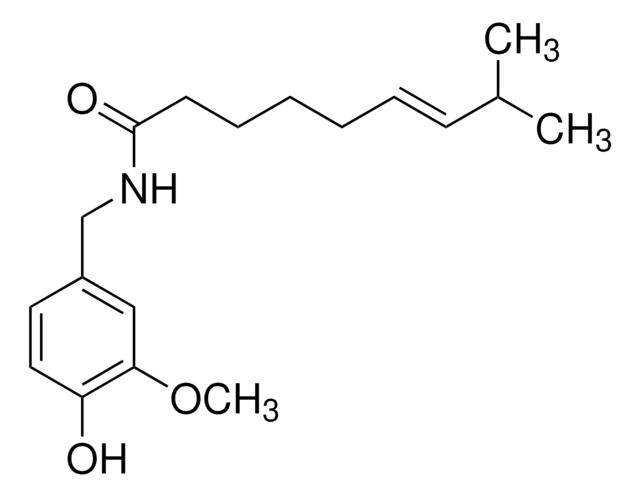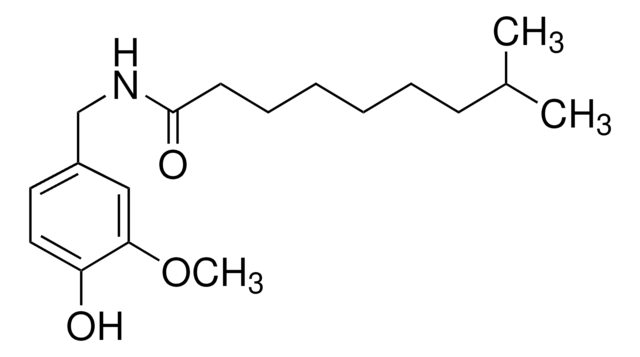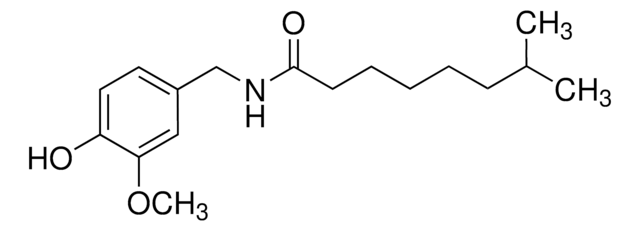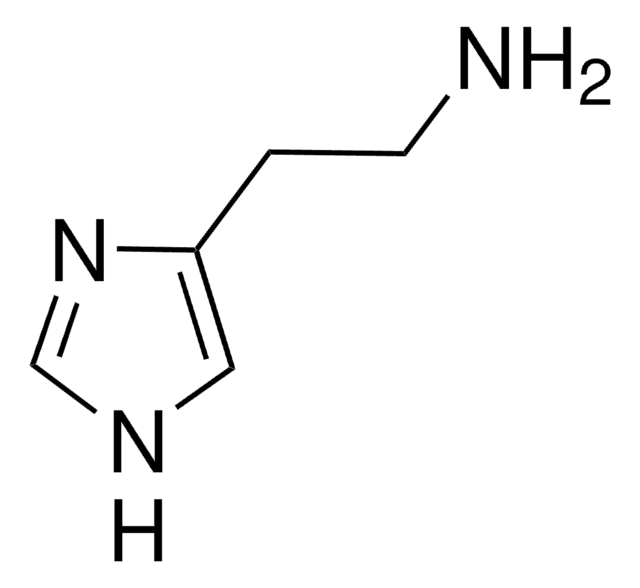推薦產品
生物源
Capsicum sp.
品質等級
形狀
powder
濃度
≥50% (HPLC)
雜質
~35% dihydrocapsaicin
mp
62-65 °C (lit.)
62-66 °C
溶解度
H2O: insoluble
應用
metabolomics
vitamins, nutraceuticals, and natural products
儲存溫度
2-8°C
SMILES 字串
COc1cc(CNC(=O)CCCC\C=C\C(C)C)ccc1O
InChI
1S/C18H27NO3/c1-14(2)8-6-4-5-7-9-18(21)19-13-15-10-11-16(20)17(12-15)22-3/h6,8,10-12,14,20H,4-5,7,9,13H2,1-3H3,(H,19,21)/b8-6+
InChI 密鑰
YKPUWZUDDOIDPM-SOFGYWHQSA-N
基因資訊
human ... CYP1A2(1544) , TRPV1(7442)
rat ... Trpv1(83810) , Trpv4(66026)
尋找類似的產品? 前往 產品比較指南
一般說明
應用
生化/生理作用
訊號詞
Danger
危險分類
Acute Tox. 2 Oral - Eye Dam. 1 - Resp. Sens. 1 - Skin Irrit. 2 - Skin Sens. 1 - STOT SE 3
標靶器官
Respiratory system
儲存類別代碼
6.1A - Combustible acute toxic Cat. 1 and 2 / very toxic hazardous materials
水污染物質分類(WGK)
WGK 3
閃點(°F)
235.4 °F - closed cup
閃點(°C)
113 °C - closed cup
個人防護裝備
Eyeshields, Faceshields, Gloves, type P2 (EN 143) respirator cartridges
客戶也查看了
我們的科學家團隊在所有研究領域都有豐富的經驗,包括生命科學、材料科學、化學合成、色譜、分析等.
聯絡技術服務










